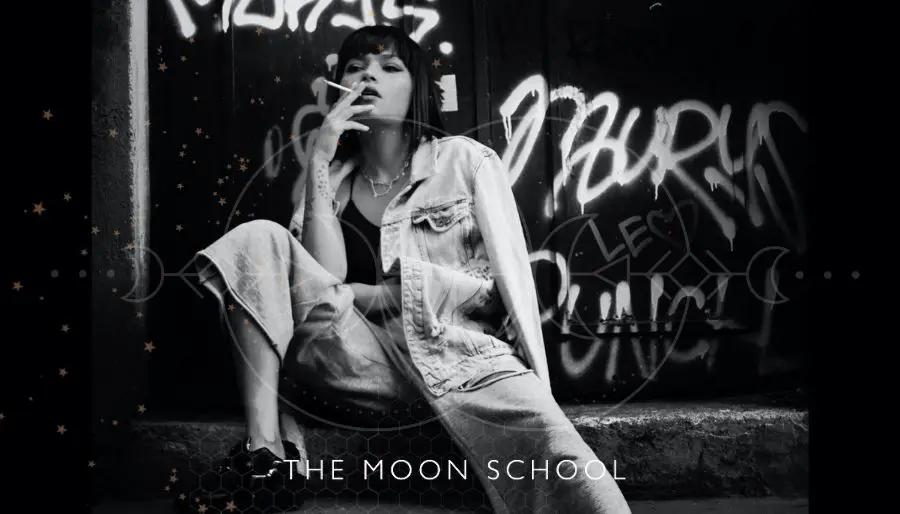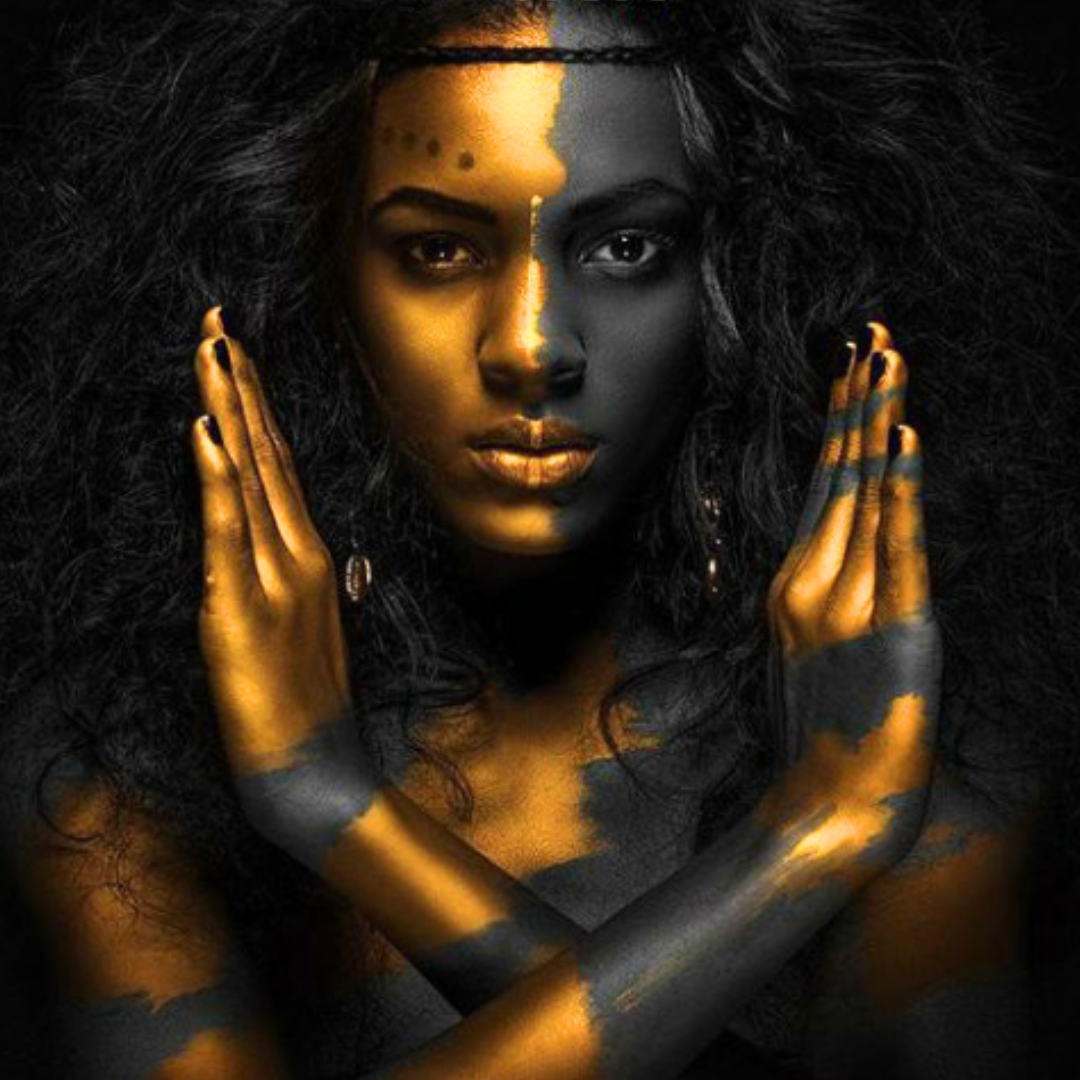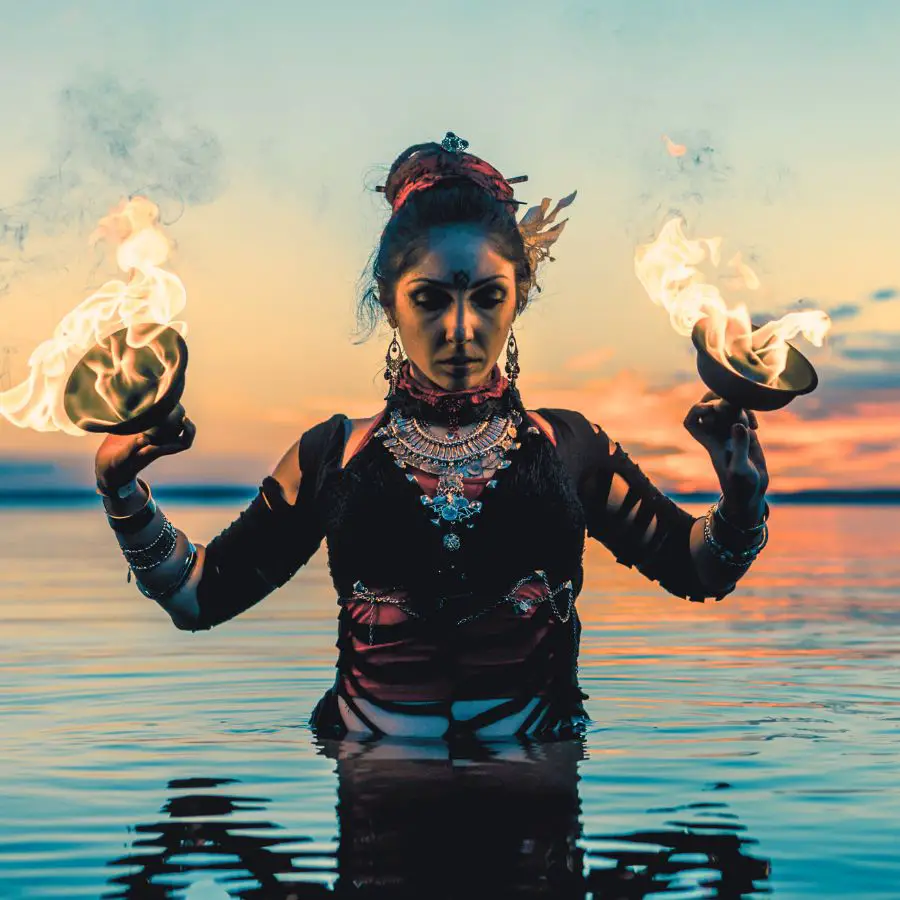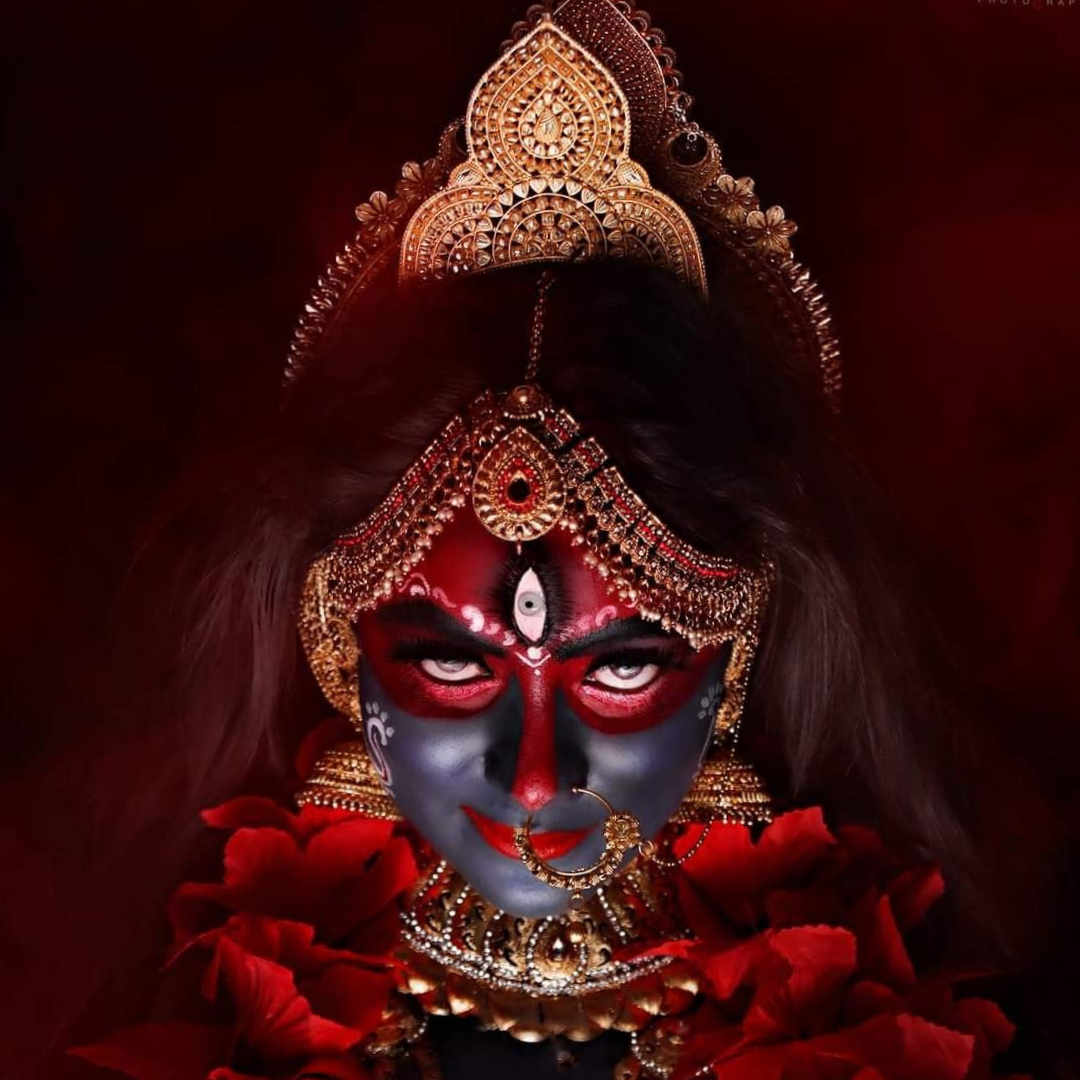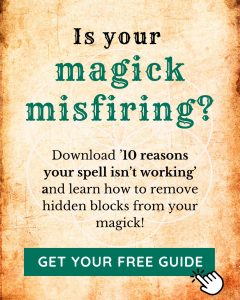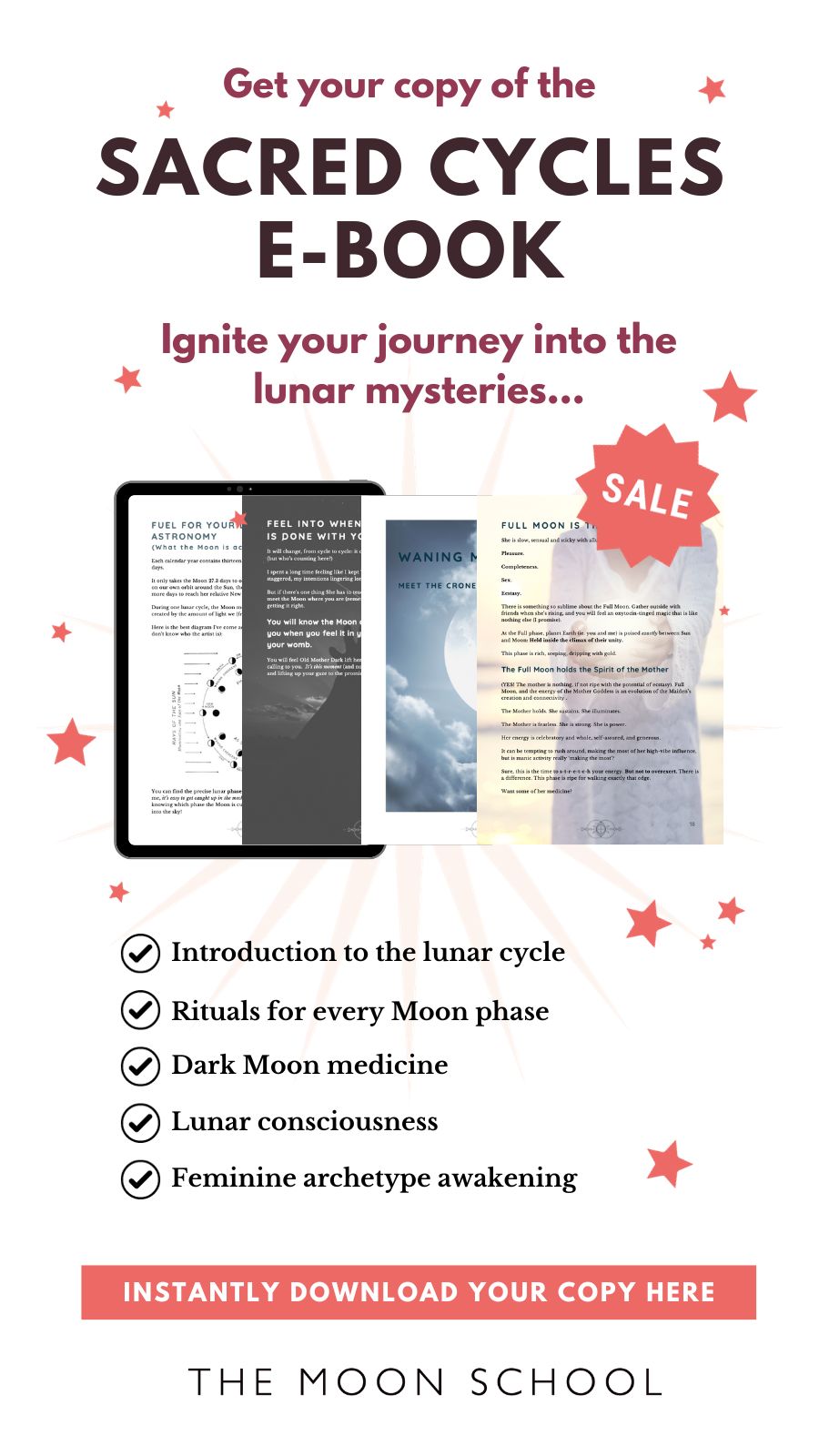The dark mother archetype is a fascinating and incredibly powerful aspect of the collective unconscious. The dark mother archetype represents a female figure who embodies both nurturing and destructive forces, often connected with the cycles of nature and the mysteries of life.
Yet like many of the darker energetic patterns, she’s often (unfairly) pushed into the shadow side of the feminine. In Western culture, the darker aspects and traits of the mother archetype have become taboo.
But it’s becoming clearer for many women today, that the dark mother archetype is an essential and transformative presence in the human psyche.
By acknowledging this potent female archetype, we may all begin to explore our potential for growth and self-awareness.
But first…
What is an archetype?
An archetype is a universal symbol or energy pattern that represents a specific personality type or set of traits.
Carl Jung, the famous Swiss psychiatrist, first introduced the concept of archetypes in the early 20th century. Yet in truth, they are much older.
According to Jung, archetypes exist in the collective unconscious, and they’re expressed through our individual thoughts, feelings, and behaviors. Archetypal energies can be found in characters in mythology, literature, and art – they cross almost all cultures and time periods.
Humans are conditioned to recognize and respond to archetypes – this isn’t something we can switch off, and it often happens on a subconscious level. Ultimately, they represent fundamental human experiences and desires that are shared by all people.
Understanding the dark mother archetype
The dark mother archetype is a powerful and complex aspect of feminine energy that appears in many cultures and spiritual traditions. Often associated with death, destruction, and the darker aspects of the feminine psyche, she is often rejected as a harmful influence.
However, the dark mother is also a source of great power and transformation. She represents the intense and raw creative force of the universe, and the ability to bring forth new life from the ashes of the old.
In some traditions, the Dark Mother is seen as a fierce protector and guide. In these cases, she helps us to navigate the challenges of life and offers the wisdom and strength we need to overcome adversity.
While she may be feared and misunderstood by some, those who can embrace the dark mother often find her to be a powerful ally on their journey of self-discovery and transformation.
Dark Mother characteristics, traits, and qualities
Powerful: The dark mother archetype is associated with great power, representing the creative and destructive forces of the universe.
Transformation: The dark mother is a symbol of transformation, representing the ability to destroy what is no longer needed, in order to bring forth new life.
Death and destruction: The dark mother is often associated with death, decay and the more destructive aspects of the feminine psyche.
Fierce: She is a fierce protector and guide. She helps us to navigate the challenges of life and offers the wisdom and strength we need to overcome adversity.
Protective: The dark mother archetype is also a powerful protector, offering comfort and safety to those who seek her guidance.
Mysterious: Often shrouded in mystery, the dark side of the mother represents the unknown and hidden aspects of the universe.
Nurturing: While the dark mother is associated with death and destruction, she’s also a source of nurturing and comfort, offering a safe haven in times of need.
Creative: A potent symbol of creativity, she brings the ability to create new life.
Independent: Despite giving birth to offspring, the dark mother is often portrayed as an independent figure. She is free from the constraints of societal norms and expectations.
The sacred: The dark mother is a sacred symbol, representing the divine feminine and the power of the universe.
What’s the origin of the dark mother?
The origin of the Dark Mother archetype is difficult to trace as it appears in various forms across different cultures and time periods.
In some traditions, she is associated with goddesses, such as Kali in Hinduism, Hecate in Greek mythology, or the Morrigan in Celtic mythology.
She has also been connected to the Cailleach in Irish folklore, and the figure of the Black Madonna in Christianity.
Some scholars suggest that the dark mother archetype may have emerged as a response to the patriarchal dominance that has characterized many societies throughout history. Or perhaps she has been forced to rise up into the collective as a rebellion against the devaluation of motherhood and suppression of women as a whole?
More recently, the Swiss psychiatrist Carl Jung identified and described the concept of the dark mother as an aspect of the mother archetype.
Also read: What’s the Meaning and Significance of the Mother Archetype in 2023?
The primordial dark mother
The primordial dark mother is a concept that can be found in various mythologies and spiritual traditions. She represents the most ancient and primal aspects of the feminine psyche, often associated with the darkness and chaos that existed before the creation of the world.
In some traditions, the primordial dark mother is seen as a powerful force of creation, representing the womb from which all life emerges. In others, she is associated with the destructive forces of nature, representing the chaos and unpredictability of the universe.
Regardless of her specific attributes, the Primordial Dark Mother is often seen as a symbol of the mystery and power of the universe, representing the vastness and complexity of existence beyond human understanding.
The difference between the dark mother archetype and the devouring mother
You may have heard of the concept of the devouring mother. (If you haven’t you can read about the devouring mother here)
The terms ‘dark’ and ‘devouring mother’ are often used interchangeably, but there are some key differences between the two.
The Dark Mother archetype represents the darker aspects of the feminine psyche, including death, destruction, and transformation. She’s often associated with dark goddesses who have both creative and destructive powers.
The Dark Mother is a symbol of feminine strength and power, and often she’s recognized for her raw power and potential to create new life.
The devouring mother archetype, on the other hand, represents a more ‘negative’ or harmful aspect of the feminine psyche. She is often associated with a mother who’s emotionally or physically abusive, smothering, or overbearing.
The Devouring Mother may be controlling, manipulative, or narcissistic, and she may use guilt or shame to keep her children dependent on her. She’s become more of a symbol of dysfunction and pathology, and can have a damaging effect on the psyche of those who are caught in her grasp.
While both archetypes represent aspects of the feminine psyche that are often hidden or repressed, the dark mother is seen as a more positive force for transformation and growth, while the devouring mother represents a more negative and destructive force.
Examples of the dark mother archetype
The Dark Mother Archetype appears in myths and folklore from different cultures, showcasing her many faces and roles. Here are a few examples –
Mythological, literary, and popular culture examples
Kali: The Hindu goddess of death and destruction, Kali Ma is most associated with the dark mother archetype.
Hecate: Known as the Queen of the Underworld, Greek goddess of witchcraft and magic, Hecate is a powerful deity usually associated with thresholds, boundaries, and crossroads.
The Morrigan: Celtic goddess of war and death, sometimes takes a triple form, appearing as three sisters.
The Black Madonna: A revered image of the Virgin Mary in Christianity, many believe this to be an ancient cultural memory of the African origins of humanity. The Black Madonna represents the original mother of Earth’s children.
Cersei Lannister from A Song of Ice and Fire: – a character in George R.R. Martin’s series (its TV adaptation became Game of Thrones) known for her fierce and protective nature.
Ursula from The Little Mermaid: The sea witch (and main antagonist) in Disney’s The Little Mermaid, Ursula is a prime example of the dark mother archetype.
The Wicked Witch of the West from The Wonderful Wizard of Oz: Another powerful sorceress, the villain in L. Frank Baum’s musical is also associated with the Dark Mother archetype.
Lilith: A potent figure in Jewish mythology, Lilith was Adam’s first wife, yet refused to lay beneath him. She is often portrayed as a dark and dangerous mother figure.
Queen Ravenna from Snow White: The villain in Snow White and the Huntsman is a powerful and manipulative woman, also representing the Dark Mother archetype.
La Llorona: A figure from Mexican folklore, La Llorona is often portrayed as a vengeful spirit and a symbol of the Dark Mother archetype. In the 2019 film The Curse of La Llorona, she is depicted as a terrifying entity who preys on children.
Throughout different mythologies, you can see that the Dark Mother archetype is a complex and multifaceted figure.
This potent female archetype represents life, death, earth, sexuality, and deep transformational energy. Yet the Dark Mother may also appear as a nurturing figure, caring for children, the sick, the elderly, and the dying.
She represents the contrasting aspects of life and the darker side of motherhood, as well as demonstrating the unwavering strength and resilience of womanhood.
The dark mother archetype serves as a reminder that transformation and change are powerful forces that need to be acknowledged and embraced. And that the enigmas of ambiguity, chaos and uncertainty are a natural part of life.
You may also like…
The dark mother in psychology
The Dark Mother archetype holds significant importance in the field of psychoanalysis, as a collection of characteristics.
This figure challenges the traditional view of the mother as solely nurturing and loving, and brings to light the darker aspects of motherhood. In its association with the shadow, the Dark Mother often signifies the repressed and disowned aspects of our psyche.
This means that with all shadow traits, there are often distortions in the way the that traits of the dark mother are allowed to manifest in out lives.
Acknowledging expressions of this archetype can help individuals confront these hidden and suppressed aspects, and eventually heal and integrate them into their conscious selves. Whether she is encountered in myths, stories, or your own dreams, recognizing and embracing the Dark Mother can aid in the process of personal transformation and self-discovery.
It’s important to realize that the concept of the dark mother archetype isn’t limited to biological mothers. This archetype can refer to any caregiving figure who exhibits potentially dark ‘maternal’ behaviors, such as stepmothers, grandmothers, or even teachers.
5 ways to explore the dark mother archetype
Are you curious about this potent dark female energy?
Many people resist her, believing her to be harmful, damaging, or too subversive. But by now, maybe you can see that she’s a necessary and medicine-filled expression of dark feminine energy. The dark mother deserves to be explored, and given a place in the bright, illuminated collective consciousness.
Here are 5 ways to explore the dark side of the mother archetype –
1. Study mythology and folklore
A really great way to explore the dark mother archetype is to study the myths, legends, and folklore from different cultures and spiritual traditions. This can help to deepen your understanding of the symbolism and meaning behind the archetype.
Here are a few suggestions of myths and folkloric tales that involve the dark mother –
Demeter and Persephone: In Greek mythology, Demeter is the goddess of the harvest and Persephone is her daughter. Persephone is abducted by Hades, the god of the underworld, and Demeter searches for her. This myth is often seen as a representation of the Dark Mother archetype, with Demeter representing the nurturing and protective aspects of the archetype, and Persephone representing the transformative and mysterious aspects.
Baba Yaga: In Slavic folklore, Baba Yaga is a witch who lives in a hut that stands on chicken legs. She is often portrayed as a fearsome figure, representing the unpredictable and chaotic aspects of the Dark Mother archetype.
The Morrigan: In Celtic mythology, the Morrigan is a goddess of war and death, often associated with the Dark Mother archetype. She is a shape-shifter who can take on the form of a crow or raven, representing the transformative and mysterious aspects of the archetype.
Lilith: In Jewish mythology, Lilith is a figure who is often associated with the Dark Mother archetype. She is said to be the first wife of Adam, who refused to submit to him and was cast out of the Garden of Eden. She is often portrayed as a powerful and dangerous figure, representing the primal and untamed aspects of the feminine psyche.
2. Look into art and literature
Another way to explore the Dark Mother archetype is to look at how it has been represented in art and literature. This can help to bring the archetype to life and make it more relatable.
3. Connect through meditation and visualization
Meditation and visualization can be powerful tools for exploring the Dark Mother archetype. By visualizing the archetype and connecting with its energy, you can gain a deeper understanding of its meaning and significance.
4. Do your shadow work
The dark mother archetype is often associated with the darker aspects of the feminine psyche.
That’s not to say that dark feminine archetypes ARE the shadow – far from it. Yet aspects of the darker archetypes have often been shunned and rejected from the collective consciousness. So to reclaim them, we must go searching through our shadow landscapes.
Shadow work can be a powerful way to help you explore and integrate these aspects of yourself. It can allow you to embrace the full range of your emotions and experiences.
5. Practice ritual and ceremony
Finally, you can explore the dark mother archetype through ritual and ceremony. This can involve creating altars, performing chants or prayers, or engaging in other practices that help you to connect with the energy of this archetype.
In exploring the dark mother archetype, you are delving into a complex and powerful symbol that represents various aspects of the human experience.
As you continue your journey, remember that this archetype embodies not only darkness but also wisdom, courage, and the nurturing spirit of the Earth.

